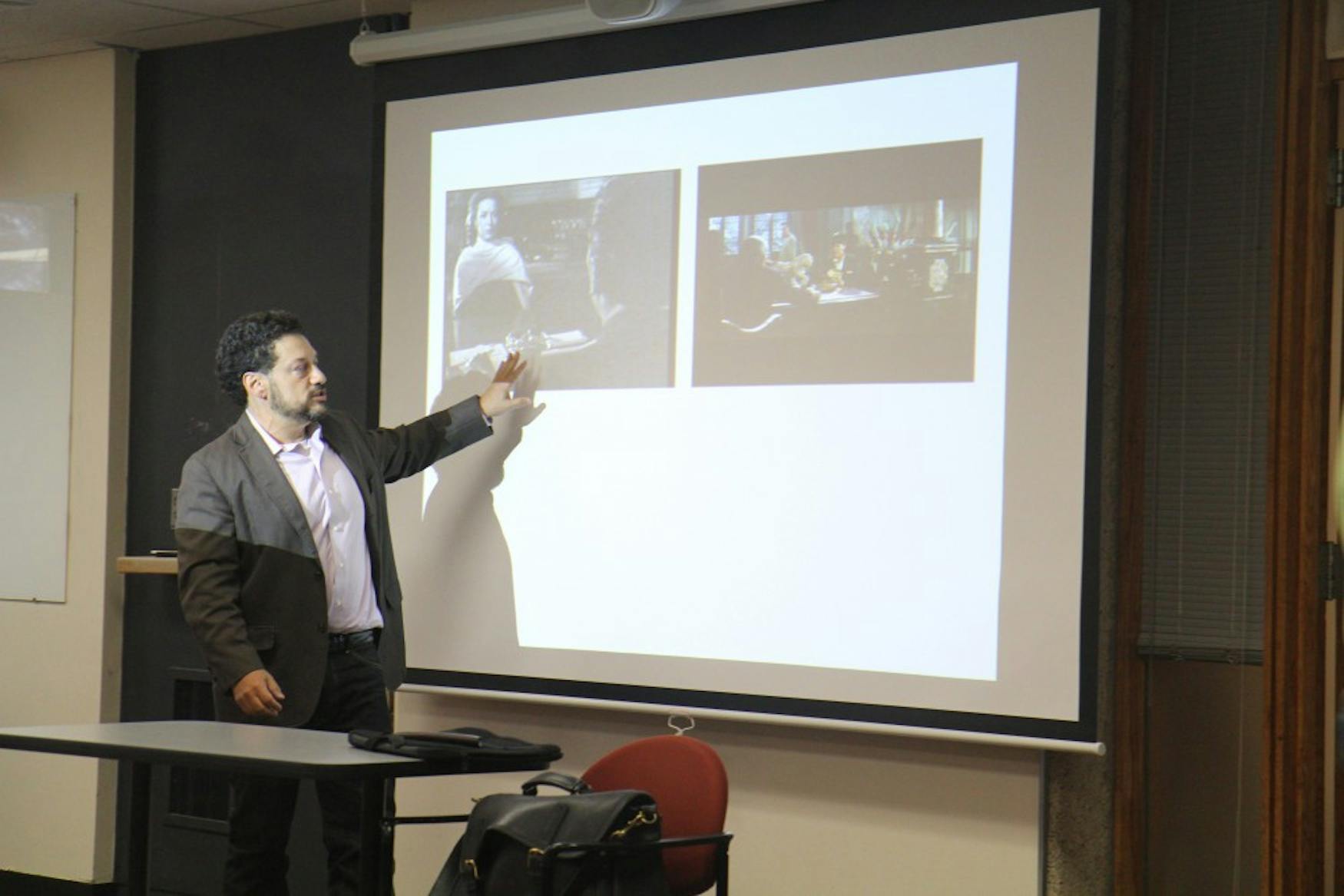Fein lectures on film during the Cold War
As it turns out, films not only reflect the current social and political atmospheres—they are influenced by these atmospheres in the way they are produced, edited and presented to the public.
On Wednesday afternoon, Harvard fellow Seth Fein spoke about how the film industry and the products of the film industry reflected and embodied the political and social atmospheres during World War II and the Cold War.
Prof. Fernando Rosenberg (HISP) introduced Fein, saying that he had wanted to bring his colleague to campus for a very long time.
The talk was sponsored by the departments of Romance Studies, Latino and Latin American studies and the program in Film, Television and Interactive Media. The diversity of sponsors gave some idea of how broad the scope of the lecture was going to be—covering linguistic, social and audio-visual themes.
Starting out by framing the lecture, Fein spoke about the four different ways that he looks at the implications of film in his own work.
The first way of looking at film is what happens on the screen—the film itself in its representations. The second relates to the behind-the-scenes or production element to films. The third is the on-screen dissemination and the inter-texts of the film—how the film reproduces ideas from other works. Fein’s final way of looking at film is through its reception by the audience.
But in the context of Cold War (and World War II films—a period that Fein talked about at the beginning of his lecture), scholarship also looks at themes of transnationalism and internationalism at play in the cinematic sphere. These films and the film industries played major roles in foreign relations between the United States and Mexico—creating dynamic atmospheres of collaboration and exchange between the two countries.
Fein addressed the poster on which the event was advertised—a poster that, as it turns out, had little to do with the lecture at hand. The image on the poster was a colorful illustration of the 1942 film Saludos Amigos (Hello Friends), produced by Walt Disney Studios. As Fein noted, the film was not meant to be set in Mexico (Fein’s point of interest) but rather somewhere in Latin America. He also mentioned that it was also not a Cold War film but a World War II film.
But Fein said, as a historian, one learns to work with the unexpected. He spoke about the World War II era in Mexico and relations with the United States during that time. He showed the World War II-period color tourist promotional video that urged Americans to come south of the boarder and experience a fun and safe vacation outside of the war’s path. The color video, Fein argued, was a way to create an image of sameness between the U.S. and Mexico—they had the same technology. Fein also talked about how the film was not strictly a Mexican endeavor. It was filmed in Mexico but processed and edited in Hollywood with Hollywood actors doing the voice-overs—making it an international collaboration.
The theme of partnership and collaboration between the United States and Mexico through film permeated throughout the lecture. The ties between the U.S. and Mexico were both reflected in the films but also in the production and execution process that was necessary to produce the films, such as American directors who wanted to have their studios and filming in Mexico.
Fein then talked about the 1947 film La Perla (The Pearl), a film based on the John Steinbeck novel of the same name published in 1947. Steinbeck also co-wrote the screenplay. As an international endeavor, it was filmed Mexico and shot in both Spanish and English to be shown to both American and in Mexican audiences.
This collaboration symbolized the breaking down of borders through film. The film was very reflective of U.S. and Mexican territorial history, as many of Steinbeck’s novels are set in the southwest American territories that have been historically part of Mexico.
With time running out at the end, Fein had to condense his lecture—the parts about the Technicolor films were abridged—but he was happy to answer any questions either in person or by email after the lecture.



Please note All comments are eligible for publication in The Justice.